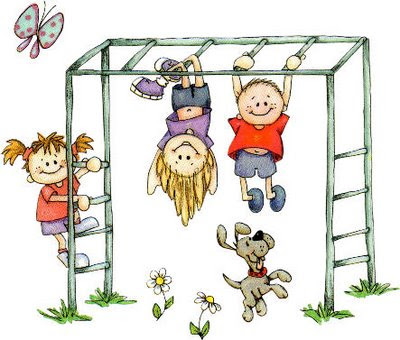
Teaching children healthy habits early in life sets the foundation for a lifetime of well-being. Understanding how to teach healthy habits to kids involves fostering routines that promote physical, mental, and emotional health. This process requires patience, creativity, and consistent encouragement. In this comprehensive guide, we will explore actionable strategies to help parents, caregivers, and educators instill positive habits in children effectively.
Why Teaching Healthy Habits to Kids is Crucial
Developing healthy habits during childhood has far-reaching benefits:
- Physical Health: Reduces the risk of obesity, chronic diseases, and other health issues.
- Mental Well-being: Promotes emotional stability and resilience.
- Lifelong Skills: Encourages self-discipline, responsibility, and independence.
The earlier you start, the more natural these habits become, leading to healthier lifestyles as they grow.
How to Teach Healthy Habits to Kids
Instilling healthy habits in kids involves a holistic approach, addressing areas like nutrition, physical activity, emotional well-being, and hygiene. Below are practical ways to introduce and reinforce these habits.
1. Make Nutrition Fun and Engaging
Healthy eating is a cornerstone of overall well-being. Here’s how to teach kids the importance of good nutrition:
Introduce Variety
- Use fun names or shapes for food to make it appealing, like “superhero carrots” or “rainbow salad.”
- Offer a range of colorful fruits, vegetables, and whole grains.

Cook Together
- Involve kids in meal preparation to spark interest in healthy ingredients.
- Teach them about portion control and the food pyramid during cooking sessions.
Set an Example
- Kids learn by observing, so ensure your eating habits align with what you teach.
- Avoid labeling foods as “good” or “bad”; instead, focus on balance and moderation.
Encourage Regular Meal Times
- Create a structured schedule for meals and snacks to prevent overeating.
- Promote mindful eating by reducing distractions like TV during meals.
2. Encourage Regular Physical Activity
Active play and exercise are essential for kids’ growth and energy management.
Make It Fun
- Introduce activities like dance, sports, or obstacle courses to keep them excited.
- Use age-appropriate equipment like jump ropes or balls.

Limit Screen Time
- Set boundaries for screen usage and encourage outdoor activities instead.
- Replace screen time with family walks, bike rides, or playing in the park.
Be a Role Model
- Join your kids in their physical activities. Whether it’s a game of tag or a family hike, your involvement motivates them.
Celebrate Small Wins
- Praise their efforts, not just achievements, to build confidence and enjoyment.
3. Promote Emotional Well-being
Teaching kids to manage emotions and stress is an integral part of healthy living.
Foster Open Communication
- Create a safe space where kids feel comfortable sharing their feelings.
- Use age-appropriate language to discuss emotions and coping mechanisms.
Practice Mindfulness Together
- Introduce simple mindfulness exercises like deep breathing or meditation.
- Use storytelling or guided imagery to teach relaxation techniques.
Encourage Gratitude
- Create a gratitude journal or discuss positive moments during dinner.
- Teach them to focus on what they have rather than what they lack.
Teach Problem-Solving Skills
- Encourage kids to think critically and come up with solutions when faced with challenges.
- Offer support but avoid solving every problem for them.

4. Instill Good Hygiene Practices
Healthy hygiene habits protect kids from illnesses and promote self-care awareness.
Make Hygiene Fun
- Use colorful toothbrushes, scented soaps, or playful timers to make routines engaging.
- Turn handwashing into a game by singing songs or using fun soaps.
Teach by Demonstration
- Show them how to properly wash their hands, brush their teeth, and bathe.
- Use clear instructions and visual aids if necessary.
Create a Routine
- Set specific times for brushing teeth, bathing, and other hygiene tasks.
- Use a reward system to reinforce consistency.
Explain the Importance
- Teach kids why hygiene matters, such as keeping germs away or feeling fresh.
- Relate hygiene habits to their favorite characters or stories for better understanding.
5. Build a Sleep Routine
Adequate sleep is essential for kids’ development and overall health.
Set a Consistent Bedtime
- Establish a regular bedtime routine, even on weekends.
- Include calming activities like reading or storytelling before bed.
Create a Sleep-Friendly Environment
- Ensure their room is dark, quiet, and cool.
- Limit stimulating activities and screens an hour before bedtime.

Teach the Value of Sleep
- Explain how sleep helps their body grow, repair, and recharge.
- Use simple analogies, like comparing their body to a battery that needs recharging.
6. Foster Social Skills and Positive Relationships
Healthy habits extend beyond physical health to include social well-being.
Teach Empathy
- Encourage kids to consider others’ feelings and perspectives.
- Use role-playing games to teach them how to respond to different situations.
Encourage Team Activities
- Involve them in group sports, playdates, or community events.
- Teach them the value of teamwork, cooperation, and sharing.
Model Respectful Behavior
- Show kindness and respect in your interactions with others.
- Use positive reinforcement to acknowledge their good social behaviors.
Tips for Successfully Teaching Healthy Habits to Kids
- Start Early: Introduce habits as soon as possible to make them feel natural.
- Be Patient: Habits take time to develop, so provide consistent guidance.
- Use Positive Reinforcement: Reward effort and progress, not just results.
- Customize for Age: Tailor habits and explanations to the child’s developmental stage.
- Make It Interactive: Use games, stories, or songs to keep kids engaged.
Common Challenges and How to Overcome Them
Resistance to Change
Kids might resist new routines, especially if they’re used to different habits.
Solution: Introduce changes gradually and explain why they are beneficial.

Inconsistent Reinforcement
If parents or caregivers aren’t consistent, it confuses the child.
Solution: Communicate and align strategies with everyone involved in the child’s life.
Lack of Interest
Some habits, like eating vegetables or brushing teeth, might seem boring.
Solution: Use creativity, such as rewards or fun tools, to spark interest.
Conclusion: How to Teach Healthy Habits to Kids
Teaching healthy habits to kids is one of the most impactful gifts you can give them. By focusing on nutrition, physical activity, emotional health, hygiene, sleep, and social skills, you set the stage for a lifetime of well-being. Remember, the key is consistency, patience, and leading by example.
Start small, celebrate progress, and watch your child grow into a happy, healthy individual equipped to navigate life’s challenges with confidence.
How to Teach Healthy Habits to Kids – Mini Protein Banoffee
https://mentalhealthcenterkids.com/blogs/articles/healthy-habits-for-kids



